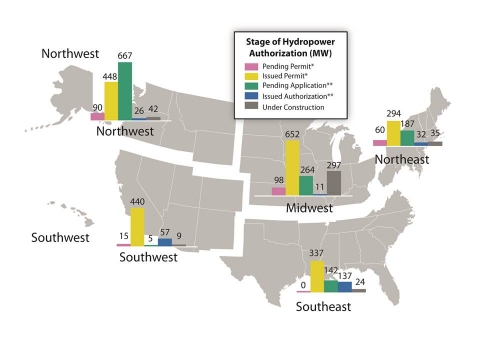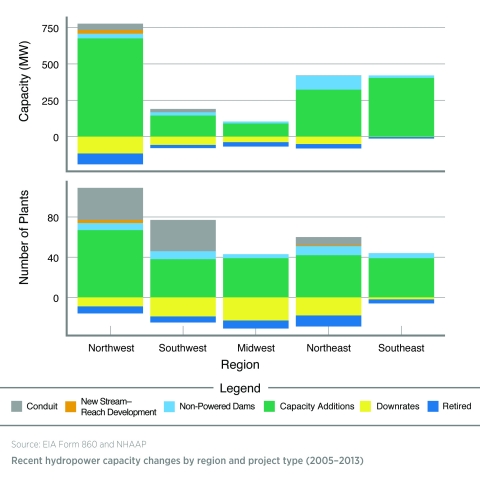Washington, DC – April 27, 2015 – (RealEstateRama) — Hydropower has provided clean, reliable power for more than a hundred years, and remains the largest source of renewable electricity in the United States. While hydropower dates back to the early 1900s, many people are unaware of hydropower’s existing infrastructure since newer technologies, such as wind power, often take center stage. But don’t be fooled, the hydropower industry is anything but stagnant.
According to the newly-released Hydropower Market Report, hydropower currently accounts for roughly 7% of installed generation capacity (excluding pumped storage), enough to power more than 20 million U.S. homes. From 2005-2013, installed hydropower capacity had a net capacity increase of 1.48 GW, enough to power more than 650,000 U.S. homes.
New projects are well underway across the nation. The hydropower industry has continued to focus on “low-hanging fruit,” with the majority of newly-constructed projects associated with powering existing non-powered dams (NPDs) and conduits. NPDs are dams not equipped to produce power, and conduits are existing structures or waterways that can be retrofitted with hydroelectric generating equipment. Although less common, new low-impact hydropower projects are also being developed where there is not existing infrastructure.
Non-powered dam projects are scattered throughout the United States; most conduit projects are being pursued in the western half of the country, while new stream-reach development projects are overwhelmingly concentrated in the Northwest, including Alaska. As of December 2014, there were 331 projects in the development pipeline, with a majority of projects in the early stages of the process.
Despite being one of the oldest sources of electricity, hydropower continues to grow and expand. The hydropower industry accounts for more than 55,000 direct jobs in the United States, with companies in the hydropower supply chain active in 38 states.
In addition to new development, hydropower generation can be increased at existing facilities. Over the last decade, approximately $6 billion has been invested in refurbishments, replacements, and upgrades to the U.S. hydropower fleet. At least 172 companies have manufacturing facilities in the United States, where they produce one or more of six major hydropower components: turbines, generators, transformers, penstocks, gates, and valves.
And yet, there remain vast untapped hydropower resources . Hydropower has the potential to increase the flexibility and stability of the U.S. electric grid and to support the integration of additional clean energy resources. By modeling and analyzing the value of hydropower assets and pumped storage in power system operation, the United States can develop and deploy technologies that increase operational flexibility. To learn more about hydropower’s role in the energy mix, please visit the Water Power Program website.
###



















